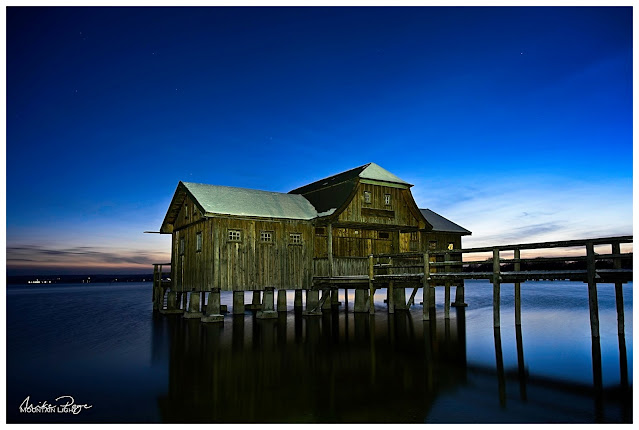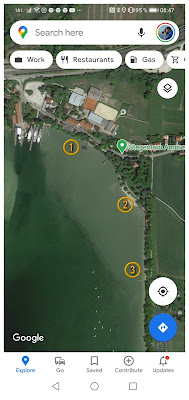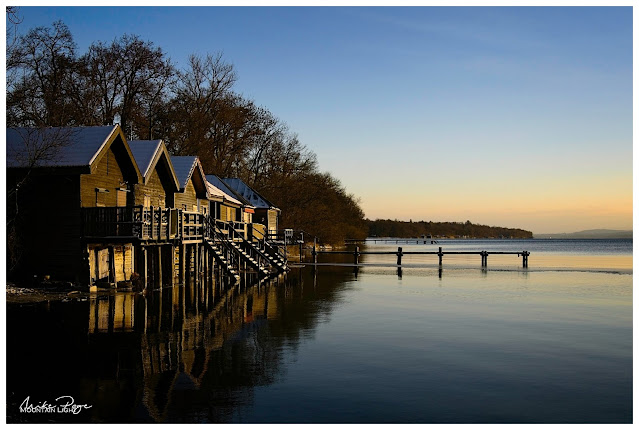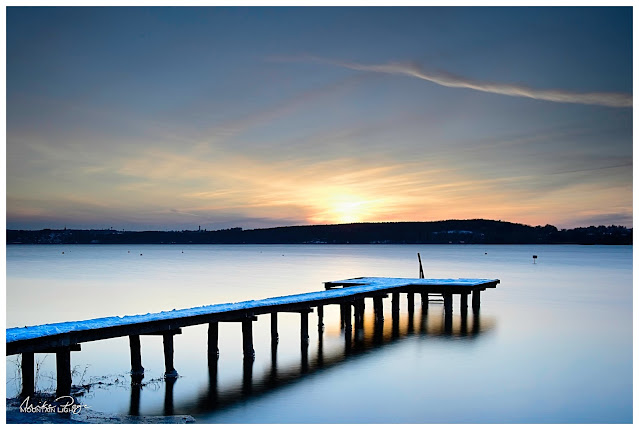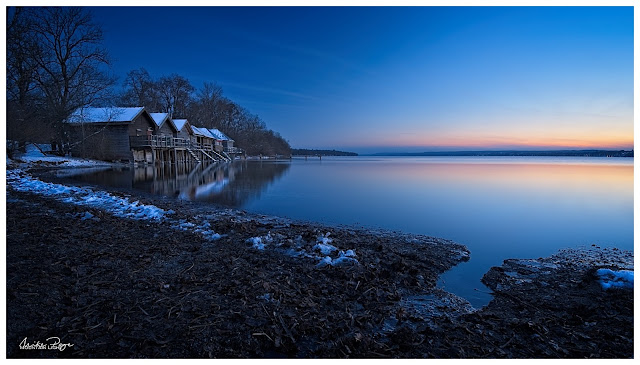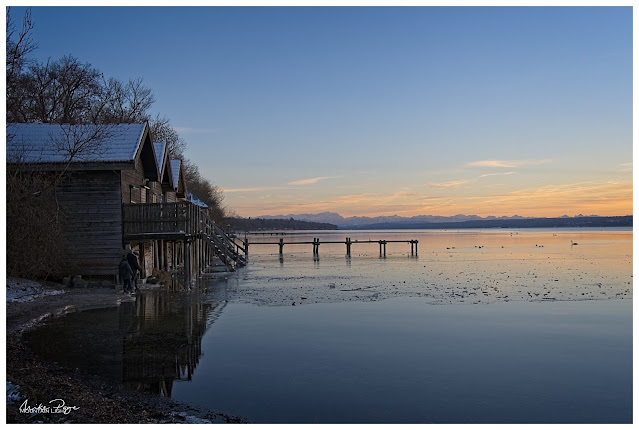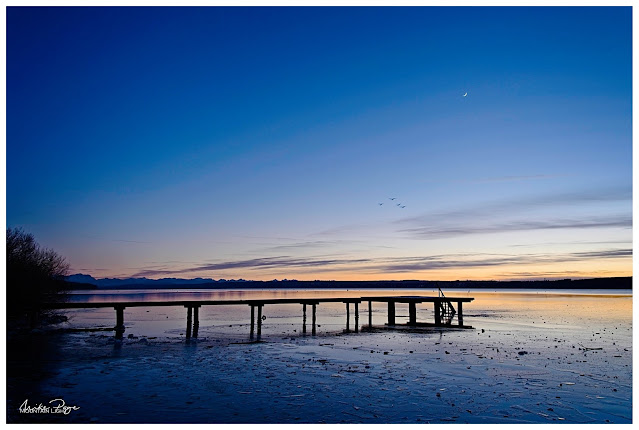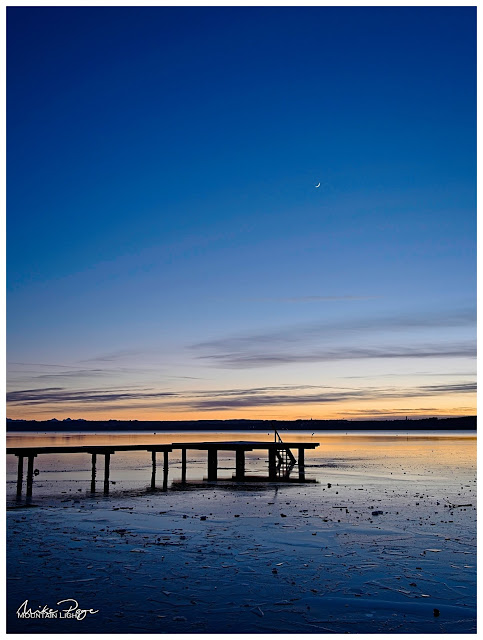I don't often do gear reviews, but I've recently had reason to change my filter system and I thought I'd compare my old Lee Seven5 filters with the new Kase Wolverine Magnetic filters for my m43 Panasonic Leica 8-18 mm f/2.8-4.
When I made the move from a high-end bridge camera to the micro four thirds system two years ago, I also invested in a filter system so that I could dabble my toes in the waters of long-exposure photography. These filters are essentially light-blockers of various intensities. Because they don't (or at least shouldn't) affect the quality of the light (i.e. the colour), they are referred to as neutral density or ND filters.
At the time I was looking around, the Lee filters were very highly thought of in the field and I quickly snapped up a filter kit designed specifically for cropped sensor cameras such as the m43 system without doing much research. Unfortunately, whilst optically excellent, the Lee Seven5 system is only good down to a focal length of 14 mm when you use the accompanying CPL which attaches to the front of the filter holder. Any wider than this and you can start to see the edges of the filter mount in the corners. Because my widest lens is the Panasonic Leica 8-18 mm, essentially I can't use this filter system with the CPL when using this lens.
Vignetting with the Lee Seven5 CPL
Lee Seven5 CPL Vignetting
Although I don't do a huge amount of long-exposure photography, I do some and so this has been an issue for me. Fast forward to 2021 and I've finally got round to doing something about it. A number of the photographers I follow on YouTube had been talking about a new system of filters from a filter manufacturer that I'd not heard of before - Kase. As well as the traditional filters involving a filter holder into which you drop the square sheets of glass, they also provide an innovative system involving circular filters that can be stacked on the front of the lens and which attach simply via magnets. This means a lot less faffing about than the traditional filter contraptions, and if nothing else I'm a huge fan of less faff!
A couple of weeks ago I drifted onto the Kase UK website. As I was browsing, an automatic chat window popped up, asking me if there was anything they could help me with. Because my question was very specific - 'what size filter system do I need to avoid vignetting on the Leica 8-18 mm lens?' I decided to give it a go and was pleasantly surprised to have a very quick reply from someone who clearly knew what they were talking about. A fellow Olympus enthusiast who was familiar with the lenses and issues involved but who couldn't say for sure whether I needed the 82 mm system or I could get away with the 77 mm filters. In the end we decided that I could order both and return the one I didn't need, but I'll save that saga for later.
There are a number of things to bear in mind when considering filters. First and foremost they need to be completely uniform, otherwise you'll get blotches on your photos that will be very difficult to remove in post. A close second requirement is colour fidelity; if the photos come out with a magenta or green colour cast it's a pain. It can be fixed to a certain degree, but it's less than optimal. After this, there are a number of further considerations, but if the filters don't fulfil these requirements then leave well alone. Durability, ease of use, cost, accessories and availability of replacements also need to be born in mind.
Optical Comparison
When the Kase filters arrived we were experiencing milky skies due to dust storms from the Sahara (we live in southern Germany). The morning after the packet arrived I slipped over the road to shoot some test shots against the rising sun. With zero cloud cover this made ideal conditions for testing the filters as there were no clouds to create artefacts - the sky should be a homogenous gradation. All the shots were taken within a few minutes of each other (I hadn't had breakfast yet and so was highly motivated to get through the various series) at a constant aperture of f/4 and ISO 200. The images are a 25% crop of the top left quadrant of the photos. They are from the raw files but are essentially unprocessed apart from lens correction. Although I had the camera, an Olympus OMD E-M1 Mk III, set on auto white balance, this only affects the jpeg images and not the raw files. I exposure-bracketed each time and have chosen the +2 EV images in order to give the lightest possible images to compare the exposures.
With the Lee filters I used the 0.45 and 0.9 ND filters (1.5 and 3 stops respectively), for the Kase filters I used the ND8, ND 64 (3 and 6 stops respectively) as well as the CPL filters - a stack of three filters (this will be important later - see below under Afterthought).
*top right corner chosen as a mis-aligned filter caused shadow on the corner - this was not a vignetting issue.
Lastly, I tested the 82 mm filter at 8 mm focal length with the tripod high-res mode. A friend had mentioned that he’d seen vignetting with HR that hadn’t been visible in normal mode. Not a biggy, but something to watch out for.
 |
| High-res mode with 3x 82 mm filters |
The bottom line is that both systems appear to be colour neutral as well as highly homogenous and that the 77 mm Kase Wolverine filters vignette slightly with multiple filters at 8 and 10 mm but the 82 mm filters don’t - unless you’re shooting in the Olympus high res mode.
Afterthought
The reason I stacked three filters for Kase is because that's how I often used the Lee filters; the 1.5- and 3-stop filters are relatively weak and I often found myself stacking them. Having slept on it, I'd probably normally only use two Wolverine filters - the 3-, 6- or 10-stop with the CPL in front. In the meantime the clouds have come in and so I was restricted to lighting up a section of wall in the house to see whether reducing from three to two filters could overcome the last vignetting issues. Again, all photos at f/4, ISO 200 and this time all at 8 mm and top left hand quarter of image.
 |
| 8 mm, no filters |
 |
| 8 mm, 2x 82 mm filter |
 |
| 8 mm, 2x 82 mm filter, tripod high-res |
 |
| 8 mm, 2x 77 mm filter |
 |
| 8 mm, 2x 77 mm filter, tripod high-res |
As you can see, there's hardly any shadow with the 82 mm filters, but a little with the 77 mm's still. The 82 mm filter works fine with the Leica 8-18 mm at the widest end even in high-res mode.
Other Features
As I mentioned above, optical comparison is not the only feature to take into consideration; durability, ease of use, cost, accessories and availability of replacements. Both systems have their pros and cons, though I notice that the Lee Seven5 appears to have been discontinued in favour of their 85 mm square filter system - perhaps they realised that the CPL was essentially unusable for wide angle photography.
Bottom Line
I really like the look and feel of the Kase filters and will definitely be keeping the 82 mm set and pensioning off my Lee system. Anyone in the EU want a 77 mm set of Kase Wolverine filters? Otherwise I'll have to send it back to the UK. Somehow. Wish me luck!
If you're interested in these filters, look up one of their affiliate photographers to get a 10% discount. In the UK you could go to Ian Worth (though you may need to sign up to his Clubhouse). Here in Germany I got a voucher from Manfred Zobrist. Otherwise, check out the Kase website of your country of choice and look up their affiliate photographers.
The Ordering Saga
Warning: Long, rambling story ahead: I live in Germany. My interaction was mostly with the UK Kase website simply because even after 30 years and despite being fluent in German, conversing in English is still my first language. Plus my initial contact via the website was extremely positive and this continued throughout. The people on the other side were very friendly, very knowledgeable, seemingly available at all hours and just willing to chat. In fact I don't think I've ever come across customer service this good. Believe it or not, Sauter Munich also rate very highly with me due to their help tracking down a camera and lens last year, but the Kase people were first in class.
After the initial contact I managed to get my hands on a 10% discount voucher via Ian Worth's website. Bearing in mind Brexit, I thought I'd be clever and order the filters from Kase Germany. Having sorted out the order, I got to the last step - entering the voucher code - and got bounced. Code not recognised. After asking around a bit we worked out that Ian's voucher was only valid with the UK site. I looked around a bit for a German equivalent, but at the time couldn't find one. So back to the UK site, Again, all the goodies in the basket (there were 6 items in all, the two filter systems plus two adapters each for for a 67 mm and 72 mm lens thread) - all from different parts of the website. Voucher accepted. Great. Shipping information: no shipping to Germany. Nuts! The chat box was active again and I brought up the shipping issue with the Kase colleague at the other end. "No problem sir, we'll have that fixed in an instant" - no sooner said than done and literally within seconds I was able to process the order on a Friday evening.
In the meantime, I'd managed to find a German photographer who was offering Kase discount codes on his website. I sent off a request, but unlike the UK people, he appeared to be off for the weekend already. Anticipating a positive response, I checked back with Kase UK (I did say this was a long, rambling story, didn't I?) to ask whether the order could be delayed for a couple of days whilst I waited for the German voucher. They checked, but unfortunately by this stage the order had been processed and couldn't be held up any longer.
A couple of days later I received an email from the package service asking me to pay the European VAT/MWSt. I'd envisioned having to drive several miles to my nearest customs depot to pay import tax, but contrary to the experience of other ex-pat friends, DPD appears to have all its ducks in a row. After filling out the requisite forms and giving my credit card details (yes, of course I cross-checked the package number from the DPD payment request with the Kase dispatch note), the order was once again on its way and a couple of days later in my hands.
So now the filters are tested, the 77 mm Pro kit back in its box and waiting to either go back to Kase UK or on to some lucky person this side of the Channel. If you don't have anything wider than about 14 mm (m43 equivalent) and are interested in a set of top quality filters, get in touch, perhaps we can do a deal...
